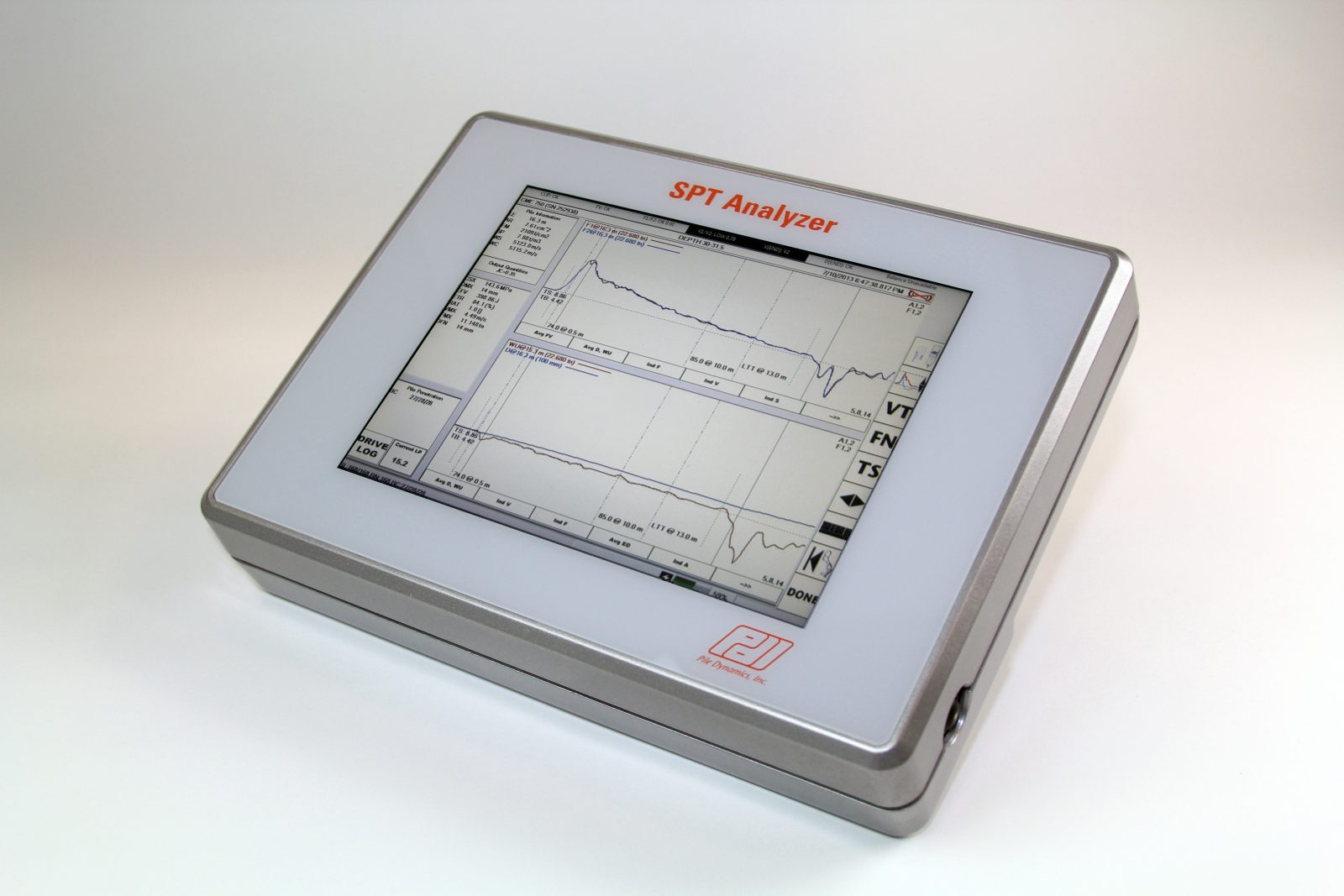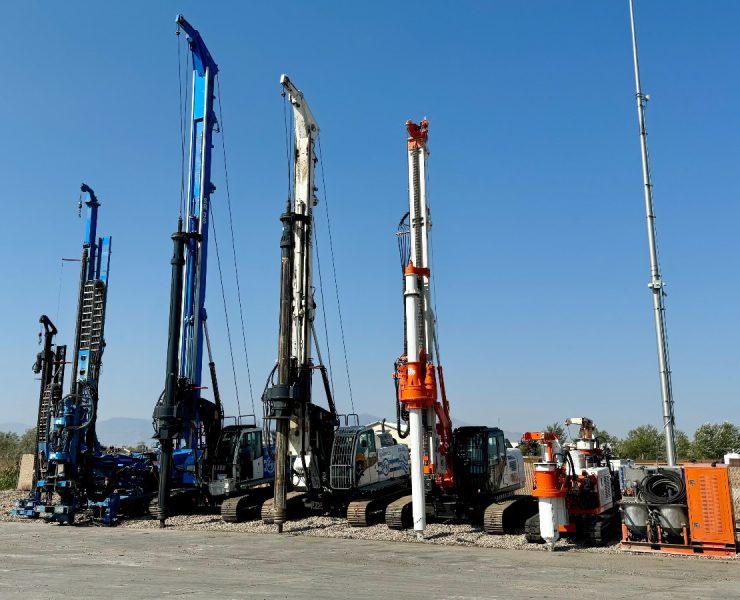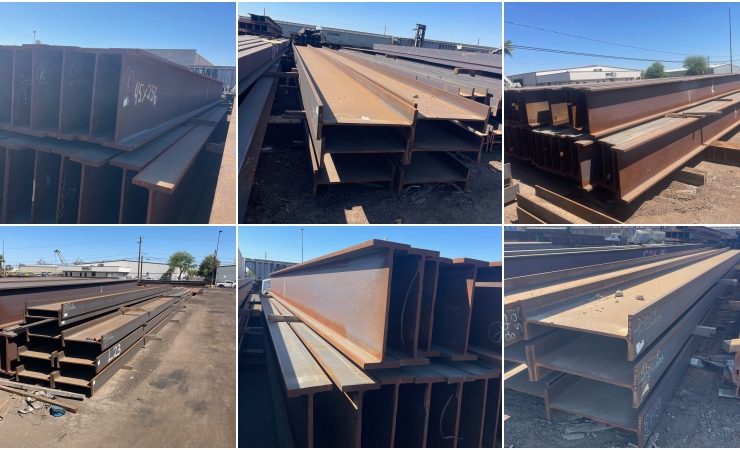Recent Developments in SPT Energy Measurements

Pile Dynamics recently released a redesigned system for SPT hammer calibration. Both the hardware of the SPT Analyzer and the software used for analysis and reporting of Standard Penetration Tests (SPT) energy measurements have been completely revamped.
Standard Penetration Tests are a widely used geotechnical investigation tool that involves drilling an exploratory boring into the soil, driving a sampler into the bore hole and recording, among other things, the number of hammer blows required for it to travel a certain penetration – the N value. The sampler is connected to the bottom of a drill rod, and may be driven by a variety of SPT hammers, each of which with a different efficiency. This variability may cause the same soil to behave very differently depending on the equipment used for the test. Project specifications therefore often require that N be normalized based on the energy transferred by the hammer to the sampler. Both the European Code EN ISO 22476-3 and the North American standard ASTM D4633 state that the only acceptable method of determining this energy is by force and velocity measurements. In the United States, State Departments of Transportation typically require that the equipment used to perform Standard Penetration Tests be periodically ‘’calibrated” in this fashion.
The SPT Analyzer system includes a main unit (pictured) that processes strain and acceleration measurements obtained during the test itself. The measurements are acquired by attaching a rod section specially instrumented with two strain gage bridges and two Pile Dynamics- brand accelerometers (collectively referred as sensors) to the SPT drill string. Once the hammer hits the drill string, the SPT Analyzer processes the strain and acceleration measurements, which respectively yield the force and velocity necessary for the calculation of transferred energy.
In the newest release of the SPT Analyzer, Smart Sensor technology allows the program to ‘’read” the rod instrumentation, so that sensor calibration and rod cross sectional area are input automatically to the SPT Analyzer. This simplifies the initial test setup considerably. This latest model of SPT Analyzer also responds to multi touch gestures and has numerous color schemes available, making things like adjusting time scale or display to better view data in the field much simpler than previously. A preprogrammed set of output quantities tailored to SPT calibration is presented to the user, who can, however, modify it to fit a particular project need. Data quality checks are available.
The SPT Software, which processes the force and velocity data obtained during the test, has been completely rewritten: it is now completely customizable, and creates detailed reports quickly and easily. “It could reduce the time to produce a report by half, when compared with the previous version”, said Ryan Allin, Senior Engineer with Pile Dynamics.
The Pile Driving Analyzer® (PDA) system PDA-8G, also manufactured by Pile Dynamics, may also be used for SPT Energy calibration by adding on the SPT Software to the PDA software suite.
In addition to the SPT Analyzer and the PDA, Pile Dynamics produces several other quality assurance and quality control products for the deep foundations industry. The company is located in Cleveland, Ohio, USA, and has commercial representatives in all continents. For more information visit www.pile.com/pdi.

















